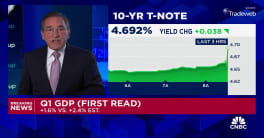The S&P Case-Shiller home price index for Q1 continued to deteriorate with the 20-city composite index posting a record annual decline of 14.1%. In March, the index also declined by an annualized 14.4%. The Case-Shiller index has fallen every month since peaking in July 2006.
"The steep downturn in residential real estate continues, there are very few silver linings that one can see in the data" said David Blitzer, chairman of the index committee at Standard and Poor's.
Compared to twelve months ago, the index also declined an annual 14.1%.
The 20-city composite is currently at a level of 172.16 while the 10-city composite is at 186.06.
In March, 19 out of 20 metropolitan areas posted annual declines, with six areas having negative growth exceeding 20%. Las Vegas continued to decline by 25.9%, followed by Miami and Phoenix with a drop of 24.6% and 23.5% respectively.
The consensus had forecast an annual decline of -12.5% in Q1 and a 14.2% pullback in March. According to ING economists, "Admittedly, the decline in interest rates and house prices over the past 12 months has led to an improvement in the affordability of housing but potential buyers won't be rushing to buy into a market where prices are falling by 10% a year on the Case-Shiller index and the rate of decline is still accelerating, especially given the low level of consumer confidence."
In the previous month, the 20-city composite had fallen by 12.72% year-over-year while the 10-city composite had fallen by 13.55% from the previous year.
Paul Ashworth, senior U.S. economist at Capital Economics Research, expects the Case-Shiller index to continue its decline by 15% through the year and fall an additional 5% in 2009.
By Steve Stecyk and edited by Nancy Girgis







